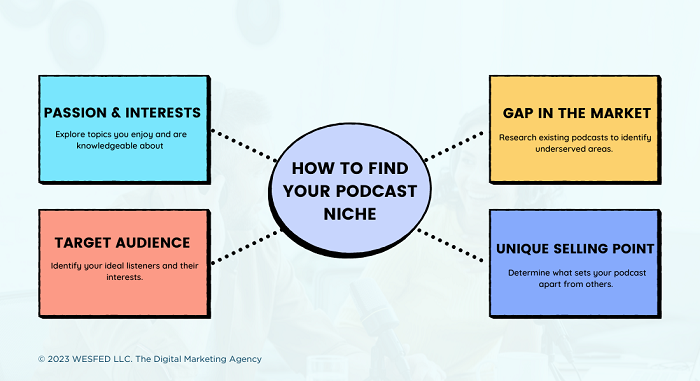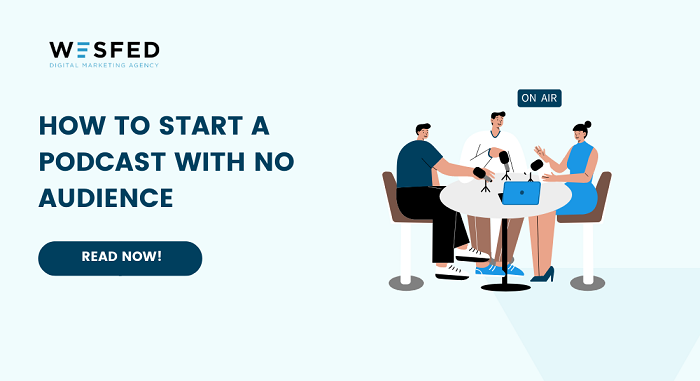Are you interested in starting a podcast but worried about launching it without an existing audience? Don’t fret! In this article, we will guide you through the process of kickstarting your podcast and building an engaged listenership, even if you’re starting from scratch. From planning and content creation to promotion and audience growth, we’ll cover all the essential steps to help you succeed. So, let’s dive in!
Table of Contents
- Introduction
- Selecting a Niche for Your Podcast
- Planning Your Podcast Episodes
- Creating High-Quality Content
- Recording and Editing Your Episodes
- Choosing the Right Podcast Hosting Platform
- Submitting Your Podcast to Directories
- Promoting Your Podcast
- Engaging with Your Listeners
- Collaborating with Other Podcasters
- Utilizing Social Media for Podcast Growth
- Leveraging Email Marketing for Audience Engagement
- Monetizing Your Podcast
- Analyzing and Optimizing Your Podcast Performance
- Conclusion
- FAQs
1. Introduction
Starting a podcast from scratch may seem challenging, but with the right strategy and execution, it can be a rewarding endeavor. In this article, we will provide you with a step-by-step guide on how to start a podcast with no audience and build a loyal following.

2. Selecting a Niche for Your Podcast
Choosing a specific niche for your podcast is crucial to attract and retain listeners. Find a topic that aligns with your expertise and passion while also having a potential audience. Conduct market research to identify the demand and competition in your chosen niche.
3. Planning Your Podcast Episodes
Outline the structure and format of your podcast episodes. Plan the topics you want to cover, the length of each episode, and whether you’ll have solo episodes or invite guests. Creating an editorial calendar will help you stay organized and consistent in delivering valuable content to your audience.
4. Creating High-Quality Content
To attract listeners and keep them engaged, focus on creating high-quality content. Research your topics thoroughly, provide unique insights, and deliver them in an entertaining and informative manner. Keep your episodes well-structured and ensure a good balance between educational and entertaining elements.
5. Recording and Editing Your Episodes
Invest in a good-quality microphone and recording equipment to produce professional-sounding episodes. Choose a quiet location for recording to minimize background noise. After recording, edit your episodes to enhance audio quality, remove any mistakes or unnecessary pauses, and add relevant music or sound effects.
6. Choosing the Right Podcast Hosting Platform
Select a reliable podcast hosting platform that will store and distribute your podcast episodes to various podcast directories. Look for features like easy publishing, analytics, and customizable branding. Some popular podcast hosting platforms include Libsyn, Podbean, and Anchor.
7. Submitting Your Podcast to Directories
Submit your podcast to major podcast directories such as Apple Podcasts, Spotify, Google Podcasts, and Stitcher. These directories allow users to discover and listen to podcasts. Optimize your podcast title, description, and tags to increase visibility in search results.
8. Promoting Your Podcast
Promotion is key to reaching a wider audience. Utilize various marketing channels such as social media, email newsletters, your website or blog, and guest appearances on other podcasts. Engage with your target audience by sharing teaser clips, behind-the-scenes content, and episode highlights.
9. Engaging with Your Listeners
Building a loyal community requires active engagement with your listeners. Encourage them to leave reviews, comments, and questions. Respond to their feedback promptly and incorporate their suggestions into future episodes. Conduct interviews or Q&A sessions to make them feel involved and valued.
10. Collaborating with Other Podcasters
Collaborating with other podcasters can help you tap into their existing audience and expand your reach. Participate in podcast interviews, cross-promote each other’s episodes, or co-host special episodes. This collaborative approach benefits both parties by sharing expertise and widening the listener base.
11. Utilizing Social Media for Podcast Growth
Leverage social media platforms to promote your podcast and connect with potential listeners. Create engaging content related to your podcast episodes, share snippets or quotes, and interact with your audience. Join relevant groups or communities to establish your authority and attract like-minded individuals.
12. Leveraging Email Marketing for Audience Engagement
Build an email list to nurture your audience and keep them updated about new episodes, special offers, or exclusive content. Offer incentives like freebies or bonus episodes to encourage people to subscribe to your mailing list. Use email marketing tools to automate your campaigns and deliver personalized content.
13. Monetizing Your Podcast
Once you have an engaged audience, explore monetization options for your podcast. You can seek sponsorship opportunities, promote affiliate products or services, create premium content for paid subscribers, or launch a Patreon page. Consider what aligns with your podcast and audience to monetize effectively.
14. Analyzing and Optimizing Your Podcast Performance
Regularly analyze your podcast’s performance using podcast analytics tools. Track metrics like total downloads, audience demographics, listener retention, and episode popularity. Identify trends, understand your audience’s preferences, and optimize your content and marketing strategies accordingly.
15. Conclusion
Starting a podcast with no audience may seem challenging, but with perseverance, valuable content, and effective marketing strategies, you can build a thriving podcast community. Stay consistent, engage with your listeners, and adapt to their preferences. Remember, building an audience takes time, so be patient and enjoy the process.
Maximize Your Online Reach with WESFED’s Tailored Digital Marketing Services
Are you ready to take your online presence to the next level? Our digital marketing services are tailored to elevate your podcast’s visibility, attract a wider audience, and foster long-term engagement. With our expertise in content promotion, social media marketing, email campaigns, and audience analytics, we can strategically position your podcast for success.
Whether you’re just starting out or looking to grow your existing podcast, WESFED is your trusted partner in digital marketing. Contact us today to discuss how we can amplify your podcast’s reach and help you achieve your goals.
FAQs
1. How long does it take to build an audience for a podcast? Building an audience for a podcast can vary greatly, but it typically takes several months to a year to see significant growth. Consistency, quality content, and effective promotion are key factors in expediting audience growth.
2. Should I invest in professional podcasting equipment from the beginning? While professional equipment can enhance the quality of your podcast, it’s not necessary to invest heavily at the beginning. Start with a decent microphone and gradually upgrade as your podcast grows.
3. How can I encourage listeners to leave reviews for my podcast? Encourage listeners to leave reviews by simply asking them at the end of each episode. You can also offer incentives like entering them into a giveaway or reading out the best reviews on future episodes.
4. Can I monetize my podcast without a large audience? Yes, you can monetize your podcast without a large audience. Consider affiliate marketing, offering premium content, or seeking niche sponsorships that align with your podcast’s topic.
5. Is it possible to repurpose podcast episodes for other content formats? Absolutely! Repurposing podcast episodes into blog posts, YouTube videos, or social media snippets can help reach a wider audience and drive traffic back to your podcast.

